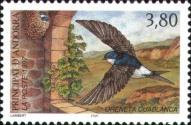UK House of Commons Early Day Motion to Ban Neonicotinoids
Text of the Early Day Motion EDM 1267 lodged by Caton, Martin
IMPACT OF NEONICOTINOID PESTICIDES ON BEES AND OTHER INVERTEBRATES
13.01.2011
That this House is gravely concerned by the contents of a recently leaked memo from the US Environment Protection Agency whose scientists warn that bees and other non-target invertebrates are at risk from a new neonicotinoid pesticide and that tests in the US approval process are insufficient to detect the environmental damage caused; acknowledges that these findings reflect the conclusions of a 2009 `Buglife' report that identified similar inadequacies in the European approval regime with regard to neonicotinoids; notes reports that bee populations have soared in four European countries that have banned these chemicals; and therefore calls on the Government to act urgently to suspend all existing approvals for products containing neonicotinoids and fipronil pending more exhaustive tests and the development of international methodologies for properly assessing the long-term effects of systemic pesticides on invertebrate populations.





